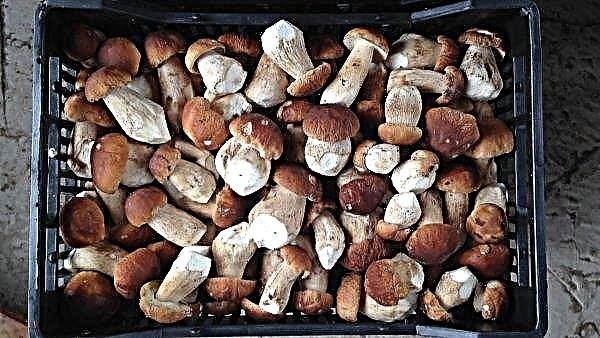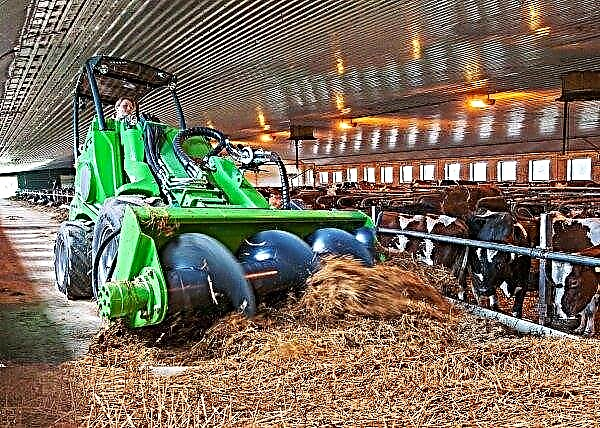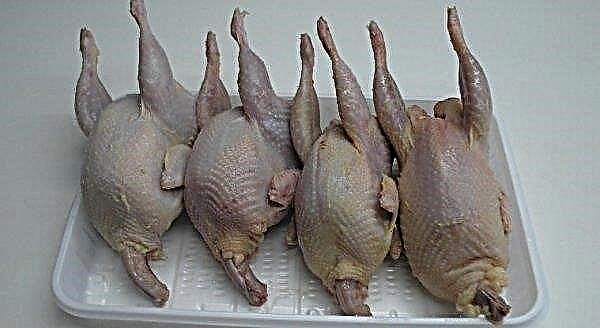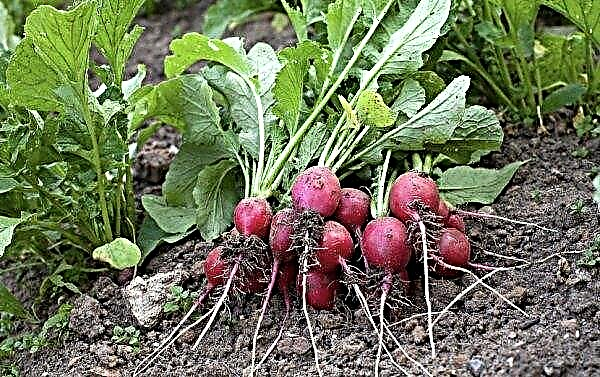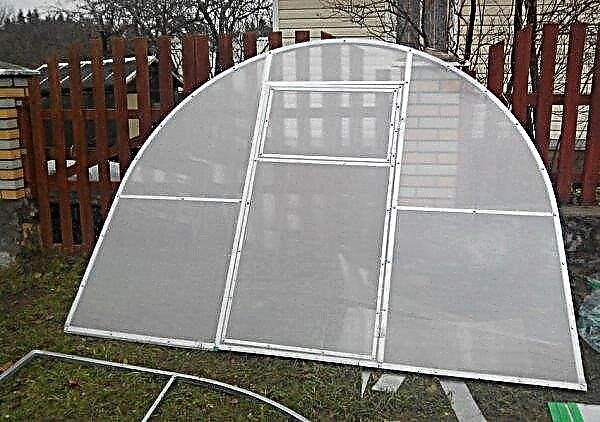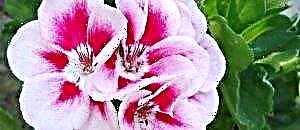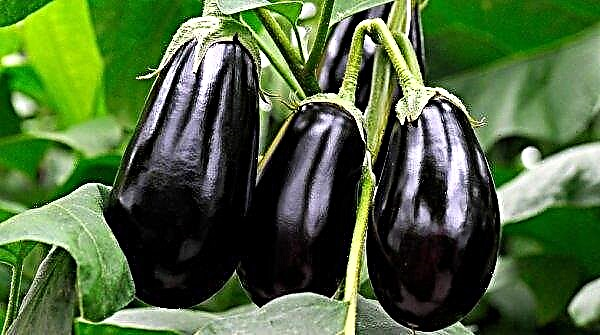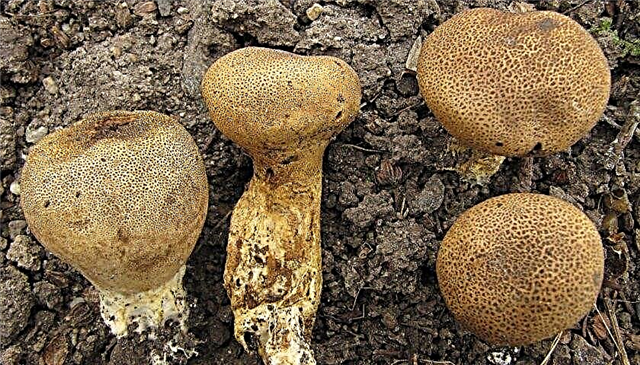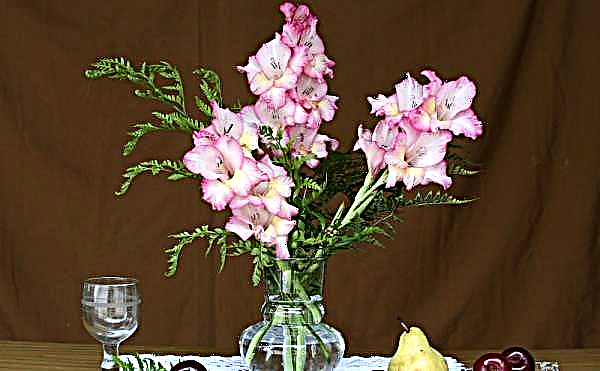In Russian nurseries, thuja began to grow and sell only about 10 years ago, but this culture has already won the hearts of landscape designers and amateur gardeners. One of the most striking and famous among the varieties of this plant is the Yellow Ribbon variety. It is very popular due to the unusual color of its shoots, as well as the ease of care for it.
Tree description
Thuja western varieties Yellow Ribbon (Thuja occidentalis Yellow Ribbon) - a small coniferous tree. This is the garden form of the so-called. white cedar. The birthplace of Yellow Ribbon is North America.
Crohn has a conical shape. A distinctive feature of this variety is the yellow-orange color of young shoots. This distinguishes the tree among the dark or blue needles of its relatives and gives it a festive look.
With the growth of shoots, they first become light green, and closer to winter - bronze. Shoots are soft, thick, have a glossy surface and many branches; they grow vertically. In general, the plant has a low growth rate: by the age of 15 it grows to 2 m in height and 1.5 m in diameter.
Did you know? Western thuja cultivars Yellow Ribbon belongs to the number of long-lived trees. The average plant life is 150 years.
For a year it adds about 15 cm in height, 8 cm in width.In the fall, cones containing seeds appear on the tree. The root system is superficial, has many branches. The variety is resistant to wind and hardy: it can easily survive frosts up to -30 ° С. The tree is very resistant to diseases and pests, as well as to the effects of urban gas pollution. However, the variety negatively reacts to sharp fluctuations in temperature conditions.
 In winter, against the backdrop of snow cover, Yellow Ribbon looks very beautiful. It is often used as a Christmas tree.
In winter, against the backdrop of snow cover, Yellow Ribbon looks very beautiful. It is often used as a Christmas tree.
Ways to use in landscape design
Due to its spectacular appearance, which the plant retains year-round, as well as the ability to fit into almost any composition, thuja is a welcome acquisition of many landscapers. The popularity of the Yellow Ribbon variety is due to the special color of the young shoots of the plant, as well as its regular conical shape.
Hedge
Yellow Ribbon is often planted as a live fence. Bright trees of sunny shades set the tone for the entire perimeter of the site and can serve as the basis for further compositions.Decorating a hedge, Yellow Ribbon is rooted in one or two rows. 
If trees are planned to be planted in one row, a distance of 50 cm must be left between them. Thuja trees planted in two rows should have 80 cm intervals between them. Trees in such hedges can be left in their original form, or they can be cut to give them the desired appearance. Such yellow-orange walls have a very attractive appearance.
Did you know? For a slender, elongated crown, thuja is called "cypress of the North."
Compositions with other plants
Yellow Ribbon is used both for performing group compositions (flowerbeds, alpine hills, mixborders), and as a solo plant against the background of dark green lawn grass. This variety is an excellent material for the formation of compositions with other conifers. An interesting impression is created by contrasts of color, shapes, textures of various varieties of plants. This thuja looks very impressive in mixborders.
You can include the plant in compositions where other shrubs and trees are present. It can be combined with climbing vines, perennial shrubs. Such compositions are pleasing to the eye even in winter, when all deciduous plants are naked.
Important! Creating a composition, all plants should be rooted at the same time. If this is not done, the greenery of the matured arborvitae will not allow the full development of neighboring, smaller plants.
The presence of Yellow Ribbon in the garden will noticeably refresh its appearance, even if it is just one tree. The plant is used as plantings in squares, parks, sanatoriums, along the perimeter of the yards of municipal institutions and city squares.

What goes well with
At the base of Yellow Ribbon, often cover ground coniferous shrubs (juniper, euonymus) are planted to help keep moisture in the summer and warm in winter, as well as strengthen the soil on the slopes of the Alpine hills.
Together with a tree of this variety, according to the rules of good neighborliness, you can plant lilac bushes, hibiscus and rhododendron. The combination of the difference in the color of thuja and deciduous plants looks spectacular.

Landing rules
Thuja seedlings should be rooted in the spring. If you plant them in the fall, the root system will not have enough time to take root and adapt before the onset of cold weather.
The place for landing thuja should be chosen in partial shade. If the shadow is too thick, the unique color of the shoots of the plant suffers.
Important! Young trees of Yellow Ribbon do not tolerate open sunlight, which is why spring should be covered with canvas or burlap.
The soil is preferably neutral, slightly acidic or slightly alkaline, loamy or sandy loam is also possible. The plant responds favorably to the addition of turf, peat and coarse sand. Yellow Ribbon does not tolerate flooding of the root system with groundwater - it needs moderately moist soil. The tree reacts negatively to drafts.
Step-by-step landing instructions:
- The size of the landing pit must be 1.5 times larger than the root system of the thuja with an earthen lump.
- The bottom of the hole must be lined with fertile soil mixed with humus.
- The young plant should be placed in the center of the planting recess.
- Gently spread the roots and sprinkle with the soil mixture, to which add 500 g of nitroammophos.
- The root neck should be left 1 cm above the ground.
- The soil around the trunk must be carefully compacted.
- Pour thuja abundantly (10 liters of water).
- The trunk circle must be mulched with peat, hay, pine needles or bark. Mulch spread with a layer of 7 cm.
Video: Thuja landing
Care Features
Yellow Ribbon, like any garden crop, responds well to regular care. Without proper attention from the owners, the plant loses its external gloss, the needles become loose, the shape becomes fuzzy, the color is dull.
First of all, it should be borne in mind that the culture is very moisture-loving and the drying of the soil instantly affects its well-being. During the summer heat, young seedlings should be watered 10 liters of water twice a week. Mature trees moisturize 15 liters of water twice a month. In particularly dry periods, sprinkling is performed twice a day (in the early morning before the appearance of scorching sunlight and in the evening after sunset).
After watering, the trunk circle should be mulched with peat or slivers. Every spring, before the start of the growing season, the plant should be fed with complex preparations, for example, Kemira-Universal. In early autumn, thuja can be fertilized with a phosphorus-potassium mixture, diluted according to the instructions.
Top dressing should be applied according to the manufacturer's recommendations, or even in smaller quantities: too concentrated fertilizer solution can burn the root system, and too frequent feeding contributes to excessive growth of the tree and the loss of a strict geometric shape.
Thuja is cut each year in early spring (March - April). At the same time, damaged, frozen, dried branches and shoots are cut off. A shaping haircut is also carried out, in which pruning of shoots is allowed no more than a third of their length.
In the first year after rooting, the seedling should be insulated for the winter period. To do this, it is wrapped in burlap or other natural material that transmits sunlight. This is due to the fact that sunlight is necessary for the tree year-round, because it is an evergreen plant and the process of photosynthesis is ongoing.
During periods of heavy snowfall, thuja branches are tied up with twine to avoid damage under the weight of snow. Without top dressing and sanitary pruning, the tree weakens and is attacked by a false shield and thuja aphid.
To prevent pest damage, the plant should be sprayed with insecticides several times during the season (Karbofos, Fundozol). It is unacceptable to plant lawn grass under the crown of a tree. In contact with needles, grass can cause damage to thuja pests.
Yellow Ribbon is one of the most valuable varieties of western thuja. The plant is unpretentious to climatic and soil conditions and does not require much care. However, knowing and observing the rules of planting and agricultural technology, you can achieve the best results in its cultivation. With minimal host effort, Yellow Ribbon will beautify the site for many years.

